#Hawk moths
Text


Tobacco hornworm — Manduca sexta 🐛
Often confused with the tomato hornworm—the tobacco hornworm has 7 diagonal stripes along with a red posterior horn, while the tomato hornworm has 8 stripes and a blueish-black posterior horn. 🍅
#beaus bug biome#beaus bugs#insects#entomology#bugs#insect#bug#nature#bugblr#lepidoptera#moth#moths#caterpillar#hornworm#sphingidae#manduca sexta#hornworms#hawk moth#Hawk moths#insectblr
133 notes
·
View notes
Text
Just a funny little guy hanging out on the old burn pile


He'll grow up to be a Tersa Sphinx Moth (Xylophanes tersa)


(left image credit u/fallen87angel)
(right image credit Aaron Ansarov)
282 notes
·
View notes
Text



I genuinely got fooled for a sec when I saw it. I thought "Is that a hummingbird?". And then it clicked.
Eurasian Hummingbird Hawkmoth (Macroglossum stellatarum), Ireland
#bugs#bugblr#insects#eurasian hummingbird hawkmoth#macroglossum stellatarum#macroglossum#hummingbird hawkmoths#sphingidae#sphinx moths#hawk moths#lepidoptera#moths#animals#photography#wildlife photography
31 notes
·
View notes
Text

Elephant Hawk moth (larva) looks like a tiny bear!
#larva#larvae#moth#moths#hawk moth#hawk moths#elephant hawk moth#elephant hawk moths#moth larva#moth larvae#insect#insects#animal#animals#mimic#mimicry#nature#flickr
17 notes
·
View notes
Text
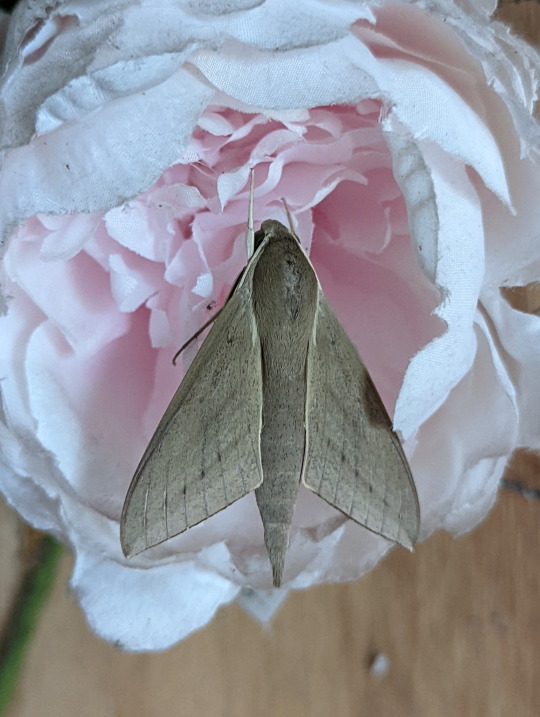

Hunter Hawkmoth resting on a plastic rose.
23/01/22 - Theretra sp.
QLD:WET
#invertblr#invertebrates#bugs#bugblr#bugs tw#bug#insects#insecta#insects tw#insectblr#insect#entomology#Arthropods#Arthropoda#Theretra#unidentified#Hunter Hawkmoths#Sphingidae#Sphinx Moths#hawk moths#Lepidoptera#Bombycoidea#moths#mothblr#mothcore#moths tw#moth#lepidopterology
31 notes
·
View notes
Text
Uncharismatic Fact of the Day
The moth Xanthopan morgani holds the record for the longest proboscis of any insect, with a length of over 35 cm (14 in) when fully extended. Even more impressive, the existence of this moth’s existence was predicted over 40 years before the first specimen was discovered. After being sent an orchid with a nectary tube over a foot long, naturalists Charles Darwin and Alfered Russel Wallace speculated that only a moth with an equally long proboscis could pollinate it. However, proof of the moth’s existence was only discovered 20 years after Darwin died, and the species was appropriately named Darwin’s Hawk Moth.

(Image: Two specimins of Darwin’s Hawk Moth (Xanthopan morganii) by Joel Minet)
If you like what I do, consider leaving a tip or buying me a ko-fi!
173 notes
·
View notes
Text

margharita / lime hawk moth
270x215mm / watercolour
instagram
#art#id in alt#margharita#alcohol tw#moths#lime hawk moth#hawk moths#inktober#painting#sketchbook#aes#watercolour#watercolor#cocktails#lime#halloween
25 notes
·
View notes
Text
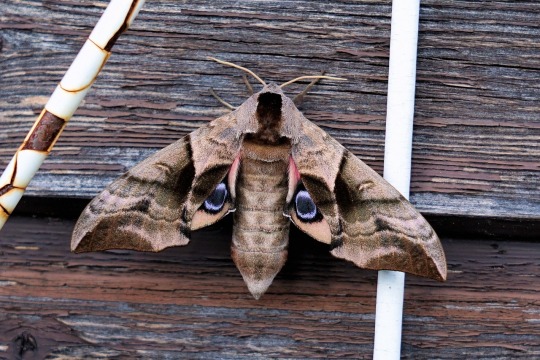
Eyed hawk-moth Smerinthus ocellatus
This species was first described Carl Linnaeus in 1758.
Image credit: webandi on Pixabay
[image ID: a moth with hook shaped light and dark brown forewings and pink and yellow orche colored hind wings transitioning basally from pink to yellow. There are large blue eyespots on the hind wings that are rimmed with black and partially covered by the fore wings.]
#eyed hawk-moth#smerinthus oscellatus#moth#webandi#lepidoptera#sphingidae#smerinthus#hawk moths#sphinx moths#Europe#subspecies unidentifiable#image free from pixabay#insect
83 notes
·
View notes
Text
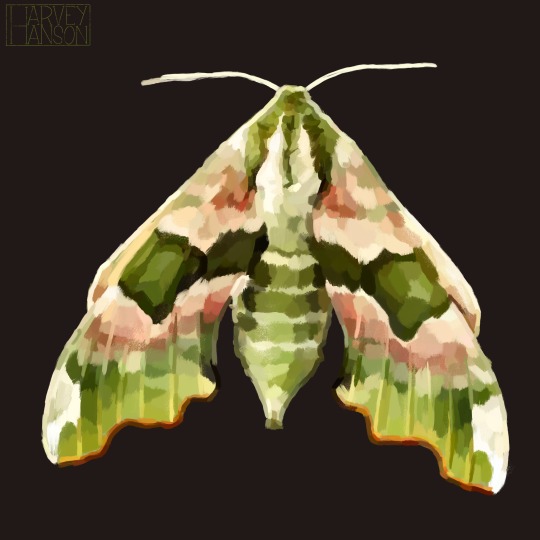
Oleander Hawk Moth.
Prints | Instagram
19 notes
·
View notes
Text

White-lined Sphinx Moth
© 2023, James Blatter
6 notes
·
View notes
Text

Elephant Hawkmoth (Deilephila elpenor) in flight
Photo by Stephen Dalton
#elephant hawkmoth#hawk moths#hawkmoths#Deilephila elpenor#Deilephila#sphingidae#sphinx moths#colorful moths#pink#pink moths#lepidoptera#moths#insects#entomology#insect photography#animals#wildlife#nature#nocturnal
9 notes
·
View notes
Text
Have any of you ever heard of the hummingbird moths we get in Britain?
So, I thought I saw a hummingbird last year. It was much bigger than a bug could be, I thought, and it hovered around flowers and looked like it had feathers.
I got pretty close but it was never still enough to see clearly. Then, when I told my parents they said "oh! it was probably a moth!" and I was baffled for a long time. Like, how could a moth look like and act so much like a hummingbird?
Until I googled "hummingbirds in the UK" and this fucker comes up:





Everyone, meet the hummingbird hawk-moth; one of the weirdest and coolest cases of convergent evolution on this planet.
This is the kinda thing I'd see in fiction and go "oooh cool, bug hummingbird! Wish we had those on earth!" But we do. We really do have them on earth!! Isn't that nuts?!?!?
#nature#bugs#moth#moths#hummingbird#insect#humming bird#insects#hummingbird moth#hummingbird hawk moth#strange animals#convergent evolution#weird animals#nature facts#animal facts#bug facts#is that enough tags lol
4K notes
·
View notes
Text

#moth#lepidoptera#sphingidae#sphinx moths#hawk moths#death's-head hawkmoth#acherontia#acherontia atropos#october#mspaint
1 note
·
View note
Text
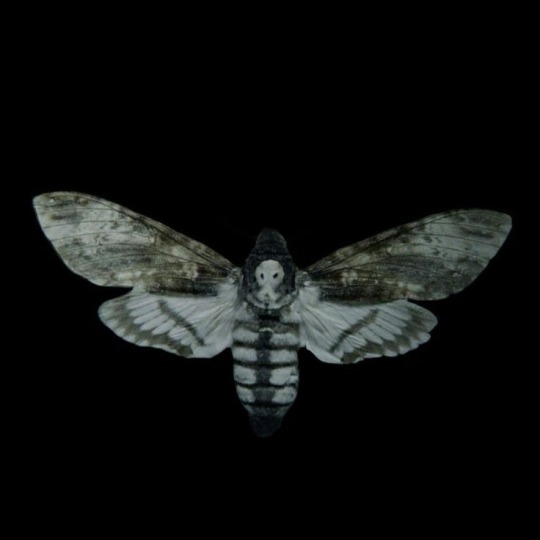
Death’s Head Hawk Moth ☠️
#goth#gothic#gothcore#goth aesthetic#spooky#darkness#goth inspo#goth moth#moth#moths#moth post#moth photography#deaths head hawk moth#deaths head moth#goth photography#gothic photography
3K notes
·
View notes
Text

Catalpa Sphinx moth caterpillar that has been parasitised by a braconid wasp. Attached to the caterpillar are the wasp pupae, or cocoons that have finished feeding and are metamorphosing into adults. (Hi-Res).
#pupa#pupae#caterpillar#caterpillars#sphinx moth#sphinx moths#catalpa sphinx#hawk moth#hawk moths#parasite#parasitic#parasitised#parasitized#parasitic wasp#parasitic wasps#braconid wasp#braconid wasps#cocoon#cocoons#insect#insects#animal#animals#nature
0 notes
Text
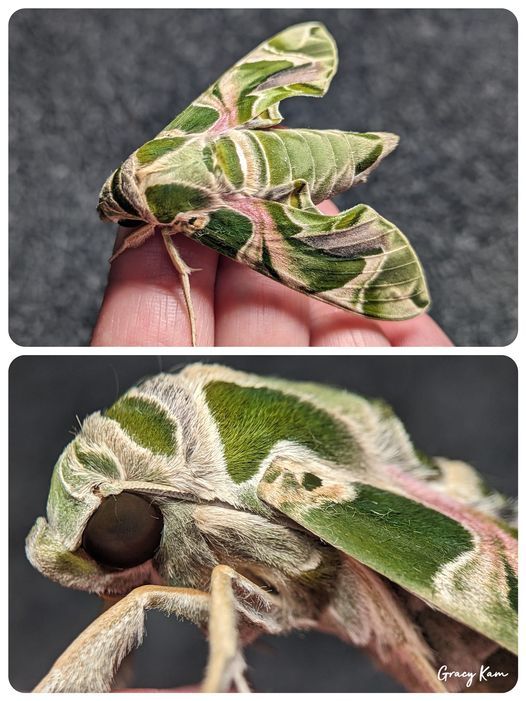
Oleander Hawk Moth (Daphnis nerii), family Sphingidae, Taiwan
photographs by Gracy Kam
3K notes
·
View notes